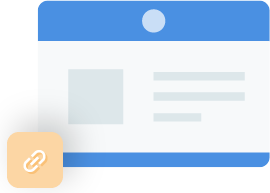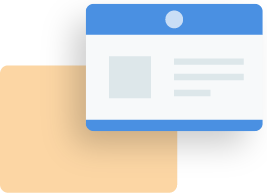Data-Driven UX Design: Why It Matters More Than Pretty Websites
In today’s digital era, aesthetically pleasing designs are crucial to capture a modern audience’s attention. However, having a great visual appeal isn’t sufficient anymore. As the online landscape evolves, the emphasis shifts towards crafting user experiences (UX) rooted in data that ensure repeat visits.
A great UX design aims to offer visitors tailor-made, user-friendly interactions that cater to their specific requirements. For businesses to thrive, they must embrace innovation and continuously test various strategies until they identify the ideal approach.
What Used To Work
In the past, the prevailing belief was that websites were primarily meant to be visually impressive digital brochures. Businesses created beautiful, sleek designs to impress visitors when they landed on their website.
This school of thought often underestimated the importance of functionality, usability, and the overall user experience. The premise was simple – if a website looked good, it was good.
However, this approach often resulted in websites that, while visually stunning, were not user-friendly or intuitive. The lack of focus on performance metrics and user-centered design principles often led to underperforming websites despite their visual appeal.
What Is Necessary Now?
While visuals still play a crucial role, the focus has shifted to UX design. It’s no longer enough for businesses to create websites that look great – they must apply data-driven design principles to ensure user satisfaction, often by executing thorough UX audits.
Embracing E.A.T. in Web Design

Expertise, Authority, and Trustworthiness (E.A.T.) are now pivotal to a website’s success. Expertise refers to demonstrating industry-specific knowledge and skills, while authority positions yourself as an industry leader. Meanwhile, trustworthiness is about fostering users’ confidence in your information or services.
The Importance of High Performance
Performance is another critical aspect of today’s web design. Users expect fast and efficient websites that provide the information they need without hassle. This necessitates optimization efforts such as reducing server response time, optimizing images, and minimizing HTTP requests to enhance your website’s overall speed and efficiency.
Prioritizing Mobile-Friendliness
Mobile-friendliness is a must, with a significant portion of web traffic originating from mobile devices. A responsive design that accommodates different screen sizes, easily clickable buttons and links, and readable text without zooming in are all part of providing a mobile-friendly user experience.
Benefits Of Data-Driven UX Design
In a digital world where user experience can make or break a brand, employing a data-driven UX design approach offers numerous benefits.

Deeper Knowledge of Users
UX design grounded in data provides a deeper insight into your users. When design ops teams examine information about how users interact, what they prefer, and what they need, they can craft an experience that genuinely connects with them.
This knowledge encompasses more than just age or location – it delves into the devices they prefer, their peak activity periods, and the content or functionalities they gravitate towards most.
Identify User Trends

Leveraging data helps you spot new user patterns. By observing user behavior trends, you can predict shifts in their needs or tastes. For example, if more and more users start accessing your site via mobile devices, it might be a hint to focus on mobile optimization. Catching these shifts early can position you ahead of the competition.
The Opportunity to Offer What Users Need, Not What You Want
Using a data-driven strategy guarantees that you’re designing with your users in mind, not your personal preferences. While believing we know what users desire is tempting, assumptions can sometimes point in the wrong direction. By centering on real user insights, you can shape the user experience around their needs and desires rather than relying on mere guesses.
Elevated Brand Perception
Data-driven UX design services can help elevate your brand perception. When users have a positive experience on your website – when they find it easy to navigate and find the content valuable and relevant – they associate those positive experiences with your brand. This improves user satisfaction and loyalty and enhances your brand’s credibility and reputation in the market.
How To Get Started With Data-Driven UX Design Today
In an era where user experience is king, data-driven UX design is the road to success. Here’s how you can get started today.
Collect Your Data From Existing Channels
The first step involves gathering data from your existing channels. This can be done through various methods:
- Functionality Testing: Conducting functionality tests helps you understand how users interact with your site and identify any issues hindering their experience.
- A/B Testing: A/B testing allows you to compare different web page versions or features to see which performs better. This can provide valuable insights into what resonates most with your users.
- Heat Maps and Behavior Flows: Tools that create heat maps and behavior flows can help you visualize how users navigate your website, showing you where they click, scroll, and spend their time.
- Market Research: Traditional market research – surveys, interviews, and focus groups – can provide qualitative insights into your users’ needs, preferences, and pain points.
- Testimonials: Customer testimonials can offer valuable insights into what users appreciate about your website and areas where they believe improvements could be made.
Implement New Data-Driven Strategies
After gathering your data, the next step is to roll out strategies informed by your insights. This could mean tweaking parts of your website, adding fresh features, or revisiting your content approach. At the end of the day, the aim is to craft an experience that meets the needs and tastes of your users.
Utilize Tools To Enhance or Automate Data Collection
There are numerous tools available that can help you collect and analyze user data:
- Google Analytics: This free tool provides a wealth of data about your website’s performance and user behavior.
- Attention Wizard: This tool uses artificial intelligence to predict where users will focus on your website.
- Qualaroo: Qualaroo is a tool for collecting user feedback via targeted surveys on your website.
- Unbounce: Unbounce is a platform allowing you to create and test landing pages, helping you optimize conversions.
- Loop11: Loop11 is a user-testing platform that provides insights into how users interact with your website.
Utilizing these tools and methods allows you to embed data-informed UX design into your routine. This will lead to a website that’s more captivating and efficient and aligns with your audience’s expectations, helping to achieve your business objectives.
Achieve the Perfect Balance in Your UX Approach
In the modern digital landscape, anchoring UX design in data is crucial for businesses. By honing in on metrics and data, businesses can craft apps or websites that are visually appealing and simultaneously provide a tailored user-friendly experience.
When executed proficiently, a data-centric UX design can pave the way for informed decisions, improve customer retention, elevate conversion metrics, and help establish a strong presence in the competitive digital marketplace.
Author Name: Jinny Oh
Author Bio:
Jinny Oh is a globetrotting entrepreneur, angel investor, and renowned UX professional with a passion for Design Thinking. Embracing a fully nomadic lifestyle, Jinny has founded WANDR, an award-winning product strategy and UX design firm that operates with a remote team of experts. With a diverse clientele spanning over 300 startups, US Air Force and Fortune 500 companies like IBM, Geico, and Adobe, Jinny has propelled WANDR to the forefront of the industry.
As an advocate for Design Thinking and Remote Work, Jinny has shared her expertise as a keynote speaker, equipping them with the skills needed to excel in the ever-evolving digital landscape.
Author :



 info@cultbooking.com
info@cultbooking.com  0049 30 726225 0
0049 30 726225 0